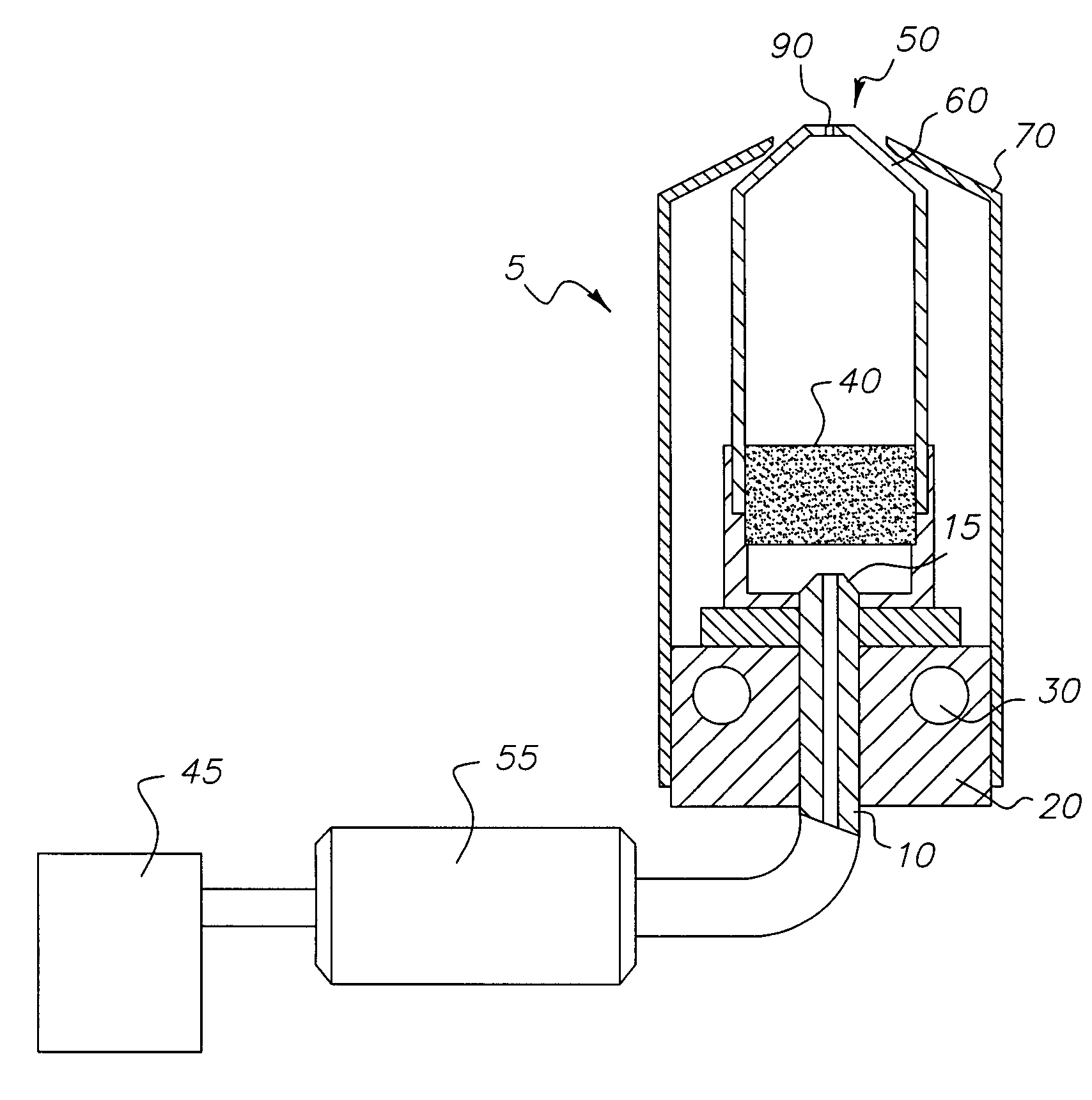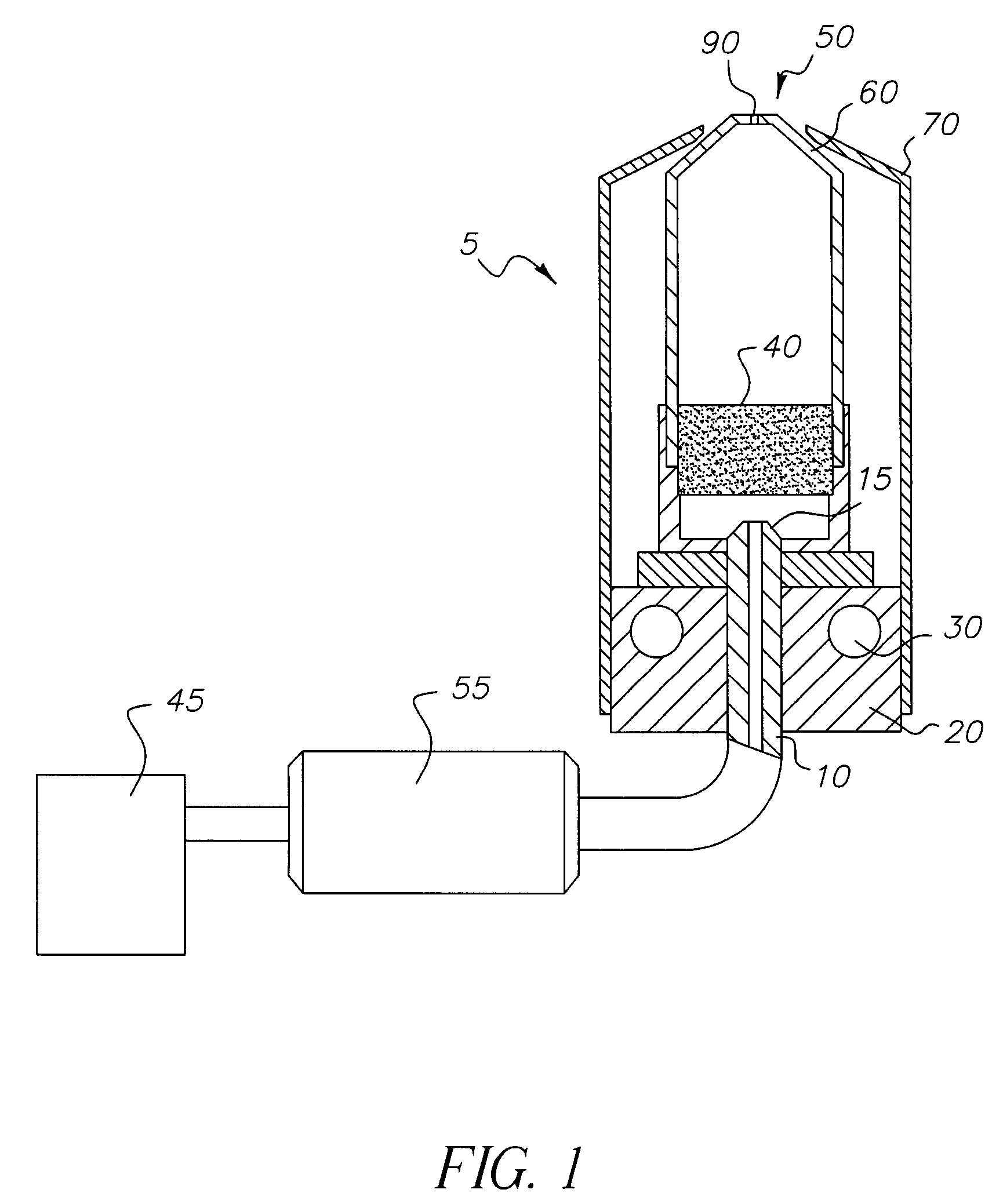Vaporizing fluidized organic materials
a technology of fluidized organic materials and organic materials, applied in vacuum evaporation coatings, chemical vapor deposition coatings, coatings, etc., can solve the problems of significant degradation, changes in the structure of molecules and associated changes in material properties, and the use of organic materials in the manufacture of oled devices are often subject to degradation, so as to reduce the risk of degrading, the effect of steady heater temperature and steady vaporization ra
- Summary
- Abstract
- Description
- Claims
- Application Information
AI Technical Summary
Benefits of technology
Problems solved by technology
Method used
Image
Examples
Embodiment Construction
[0029]Turning now to FIG. 1, there is shown a cross sectional view of one embodiment of a device of this disclosure. Vaporization apparatus 5 is a device for vaporizing organic materials onto a substrate surface to form a film and includes a permeable first member 40, a manifold 60, and a metering means, by which we mean a means for fluidizing powdered organic material or providing organic material in a fluidized powdered form, metering the powdered organic material and directing a stream of such fluidized powder onto permeable first member 40. Permeable first member 40 can be part of manifold 60. Manifold 60 also includes one or more apertures 90. Vaporization apparatus 5 also includes one or more shields 70.
[0030]In one embodiment, container 45 is a container for receiving a quantity of organic material in powdered form. Metering valve 55 in this embodiment includes a means for fluidizing the organic material and metering the fluidized powdered organic material at a controlled rat...
PUM
| Property | Measurement | Unit |
|---|---|---|
| pressure | aaaaa | aaaaa |
| work function | aaaaa | aaaaa |
| wavelengths | aaaaa | aaaaa |
Abstract
Description
Claims
Application Information
 Login to View More
Login to View More - R&D
- Intellectual Property
- Life Sciences
- Materials
- Tech Scout
- Unparalleled Data Quality
- Higher Quality Content
- 60% Fewer Hallucinations
Browse by: Latest US Patents, China's latest patents, Technical Efficacy Thesaurus, Application Domain, Technology Topic, Popular Technical Reports.
© 2025 PatSnap. All rights reserved.Legal|Privacy policy|Modern Slavery Act Transparency Statement|Sitemap|About US| Contact US: help@patsnap.com



